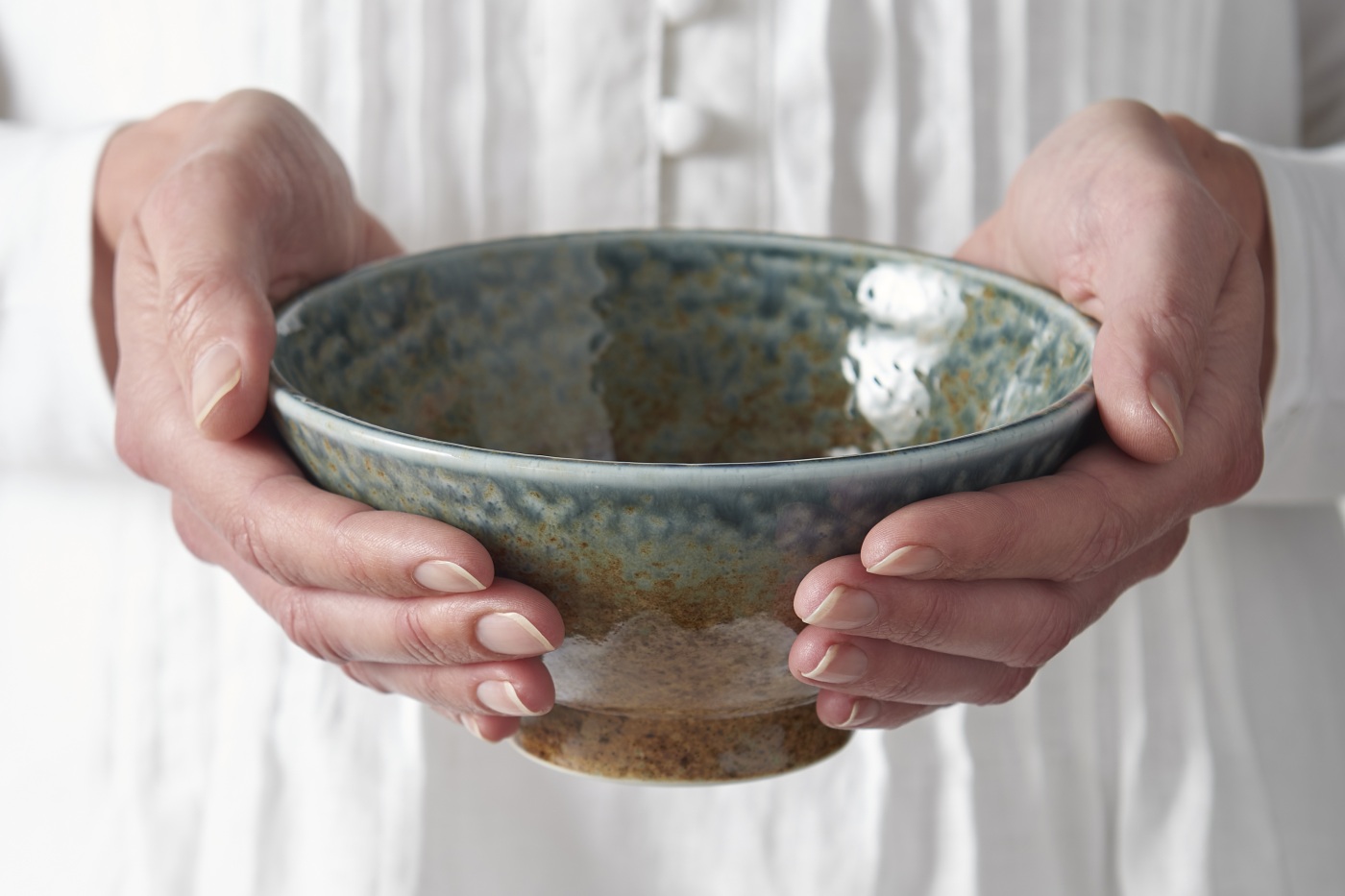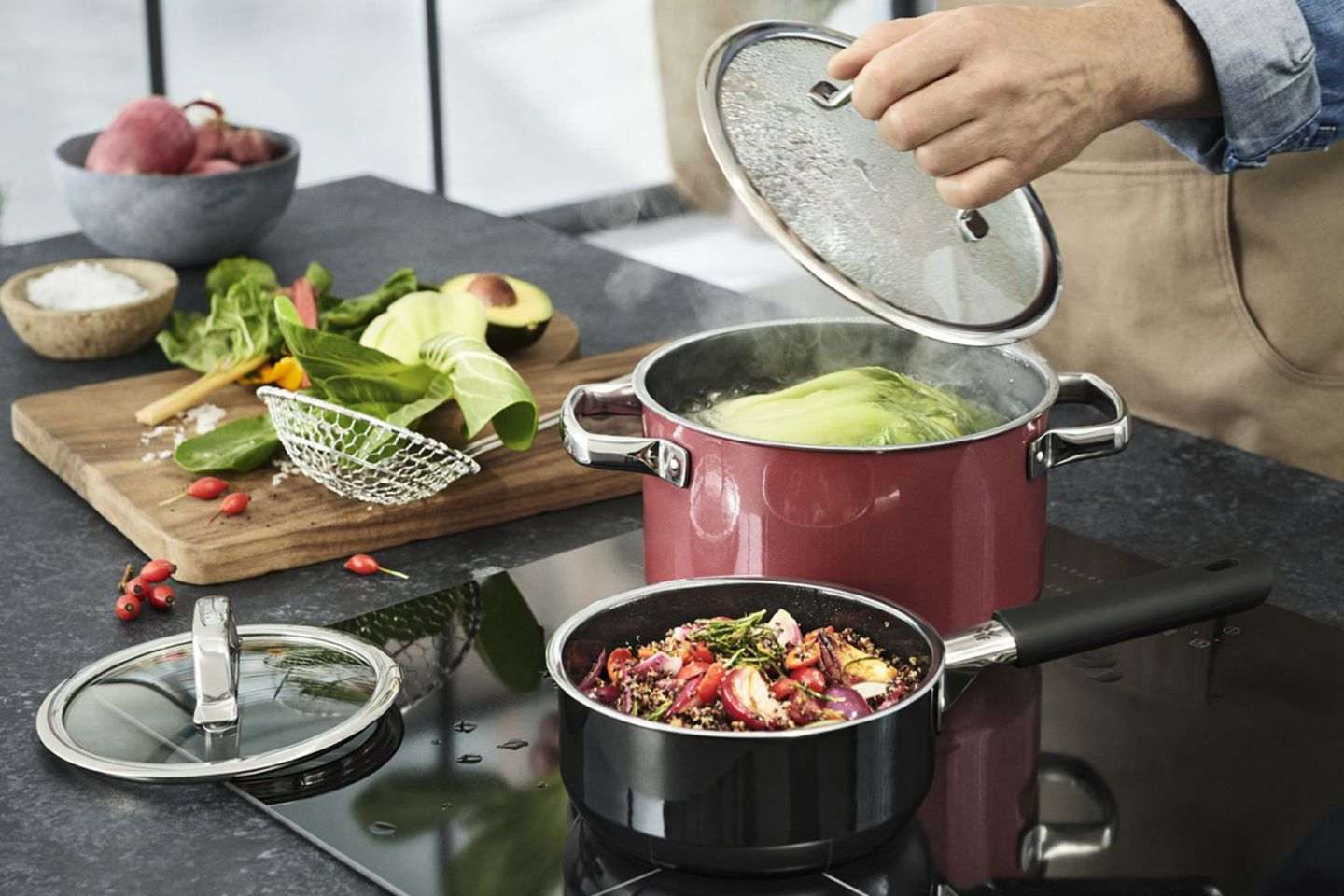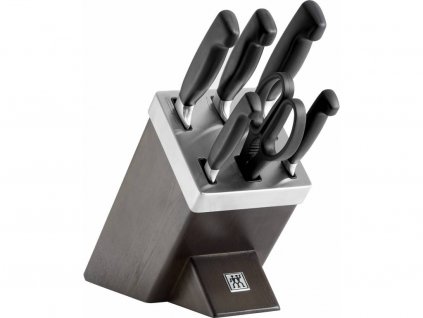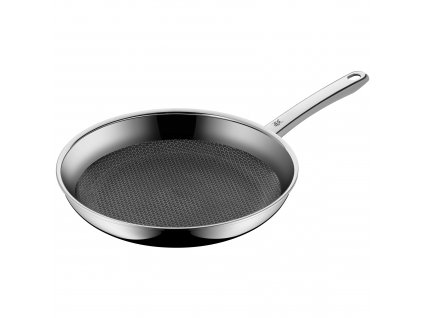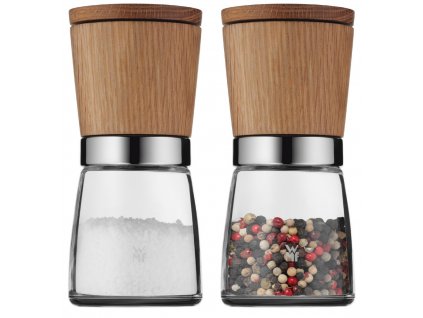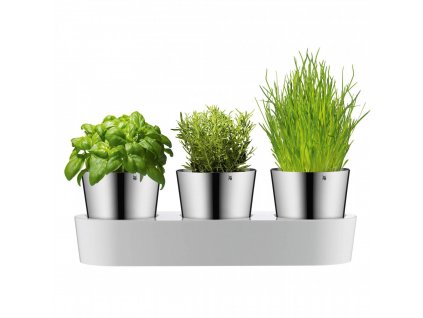
Product detailed description
The filleting knife from the Fibre Karbon 2 collection by De Buyer has a narrow and flexible blade and is extremely sharp. This knife is ideal for filleting fish or preparing chicken slices etc.
The blade is made of high quality German stainless steel X50CrMoV15 (special knife steel) with hardness 56 HRC (Rockwell hardness scale). The FK2 series has a unique knife balancing system to suit the needs of the individual chef. Simply unscrew the stainless steel foot on the handle and remove the necessary amount of stainless steel inserts.
The handle of the knife is made by hand by layering carbon fibre. This makes it very durable, strong and brings a nice and comfortable grip for fatigue-free slicing. The shield protects the fingers. We recommend only gentle hand washing and regular maintenance with a sharpener and knife sharpener. A knife rack is ideal for storing your knives safely.
SPECIFICATIONS
Knife length: 30,9 cm
Blade length: 16 cm
Material: special knife steel, carbon fibre (handle)
Colour: silver, black (handle)
ADVANTAGES AND DISADVANTAGES
 |
The filleting knife is ideal for filleting fish. The blade is extremely sharp. The blade of the knife is made of top quality German stainless steel. Unique system of balancing the knife according to the chef's needs. The shield protects the fingers. Smooth transition between bolster and handle. The ergonomic handle provides a safe, comfortable and pleasant grip for fatigue-free work. The knife is also suitable for professional use. |
PRACTICAL ADVICE
Dishwasher safe: NO
Always wash the knife only in cold water to ensure longer lasting sharpness.
THE DIFFERENCE BETWEEN A SHARPENING STEEL, A HANDHELD SHARPENER AND A SHARPENING STONE.
You use the sharpening steel during regular maintenance - might be before each use of the knife. However, only use a handheld sharpener or a sharpening stone once in a while to restore the knife to its original sharpness, i.e. when the knife is really blunt.
A SHARPENING STEEL
A SHARPENING STEEL is used for regular maintenance of knives. Use the sharpening steel to quickly and easily restore the original sharpness of your knives. Use the sharpening steel to maintain the blade. It is not easy to create a sharp edge on an already blunt knife - in this case, choose a handheld sharpener or a sharpening stone. The sharpening steel has a handle and the grinding part can have a finer or coarser surface. The sharpening steel is not practical for maintaining knives that are too large.
The grinding part of the sharpening steel can be made of different materials - diamond, ceramic, special cutting steel, etc. The length of the sharpening part should be chosen according to the length of the blades of the knives to be sharpened. We have sharpening steels for you with sharpening parts from 20 cm up to 31,5 cm - special butcher's sharpener for sharpening large knives.
Sharpening the knife with a sharpening steel

Hold the sharpening steel vertically in one hand and the knife in the other hand (inclined at about 20° to the surface of the sharpener). It's best to have a support (e.g. a table and a towel to keep the sharpener from slipping) to keep the angle the same across the blade and keep the sharpening precise. Working with the sharpening steel requires practice to avoid unwanted teeth on the blade. Pull the knife from heel to tip against the blade and repeat the same from the other side of the blade (20 times on each side). Try to keep the same angle between the knife and the sharpening steel and do not push too hard.
HANDHELD SHARPENER
Handheld sharpener is used to restore the original sharpness of the knife. Unlike the sharpening steel, it can handle even blunt knives. The handheld sharpener contains grinding wheels made of different materials, which you use to stretch the knife. Sharpening knives with the handheld sharpener is so easy and fast. Just run the blade along the entire length of the knife with the grinding wheels a few times and you have a perfectly sharp knife again. You only need to use the handheld sharpener once a month or if the knife is already blunt. A sharpening steel is sufficient for regular maintenance before slicing.
SHARPENING STONE
The knife sharpening stone has a surface with a certain coarseness. There is also a double-grain sharpening stone with one side coarse and the other side fine. The sharpening stone is used to restore the original sharpness of knives - as a handheld sharpener. The sharpening stone must be moistened before use and the knife blades must be placed at the correct angle to it (approximately 12 - 15°).
Knife sharpening with an sharpening stone

Place the blade of the knife on one end of the stone and pull the knife evenly slightly to the right against the blade. Turn the knife and pull in the same way but in the opposite direction. Always swipe the entire length of the blade. However, be careful not to catch the blade on the edge of the sharpening stone. Pull the knife as if you were trying to cut a thin slice from a knife. Do not put too much pressure on the knife. Grind first on a coarser surface and then on a finer surface to smooth the blade and remove burrs.
GRIT OF THE SHARPENING STONE
Choose the grit of the sharpening stone according to the use of the knife. The blade is ground on a grinding stone with a coarser edge , ideal for cutting soft and fibrous ingredients such as vegetables or meat. On finer grinding stones (with less coarseness) you get a smooth edge that is suitable for cutting with pressure rather than pulling, for example when chopping or skinning. The resulting edge depends on the coarseness (grit) of the sharpening stone and the angle at which you sharpen the knife.
The grit (coarseness) of the sharpening stone is given by a number which corresponds to the number of meshes of the sieve per inch (25.4 mm) through which the abrasive still falls during sieving. Thus the larger the number, the denser the screen, and the finer the abrasive. International standards FEPA ( Federation of European Grinding Aid Manufacturers) indicate the grit size see table:
|
Grit size according to FEPA |
Verbal name |
|
7, 8, 10, 12 |
rough |
|
14, 16, 20, 22, 24, 30 |
rough |
|
36, 40, 46, 54, 60 |
medium |
|
70, 80, 90, 100, 120 |
fine |
|
150, 180, 220, 240 |
very fine |
|
280, 320, 400, 500, 600 |
particularly fine |
|
800, 1000, 1200 |
extra fine |
Hosomaki sushi - Maki sushi with salmon
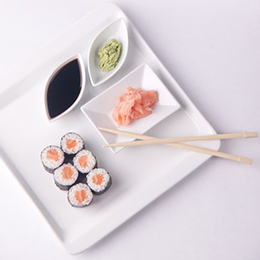
Ingredients
1 salmon fillet, 1/2 kg sushi rice, 5 pieces nori seaweed, wasabi, pickled ginger, soy sauce, bamboo mat
 Chef's advice
Chef's advice
The preparation of sushi rice should not be underestimated. Read the article on how to pick the perfect sushi rice here.
Preparation of salmon
 |
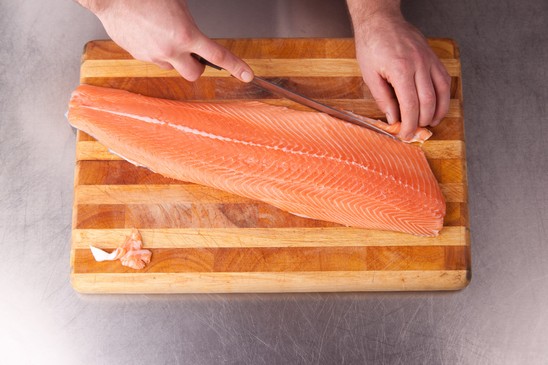 |
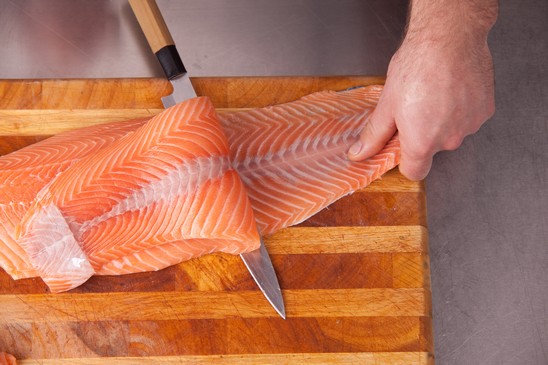 |
||
|
1. Cut out the centre fatty part of the fillet. |
2. From the edges of the fillet, cut off everything that is not orange meat. |
3. Pull off the skin with the fat so that you get completely clean meat (the fat is the dark part under the skin). |
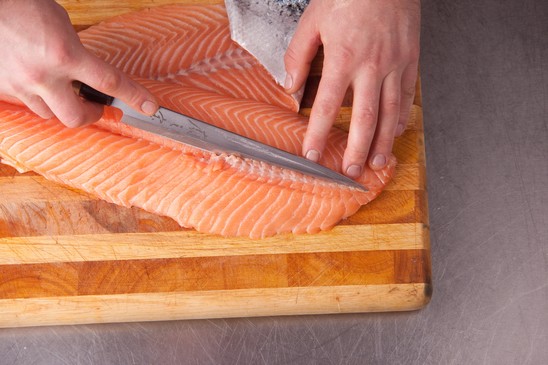 |
 |
|
|
4. Use tweezers or a knife to pull out any bones left after filleting. |
5. Cut the cleaned fillet into neat squares. |
Procedure
 |
 |
|
|
1. Cut the nori lashes in half and place them on the mat, shiny side down. Wet your hands. |
2. Apply about 80g of rice to the nori so that it is nice and loose and evenly distributed (leave about 1.5 cm of the top edge of the nori clean). |
 |
 |
 |
||
|
3. Apply a strip of wasabi and add a piece of salmon. |
4. Use the mat to roll everything up to form a tight roll. |
5. Cut the roll into 6 equal pieces. Serve with wasabi, ginger and soy sauce. |
Additional parameters
| Brand: | de Buyer |
|---|---|
| Category: | Fillet knives |
| Warranty: | 2 years |
| Weight: | 0.2 kg |
| Color: | Black |
| Material: | Steel |
| Size: | 16 cm |
| Blade length: | 16 cm |
| Pc. in a set: | 1 ks |
| Product type: | Carving and boning knife |
| Collection: | De Buyer Fiber Carbon |
| Product code: | DB428316 |
| EAN: | 3011244283163 |

.png)
